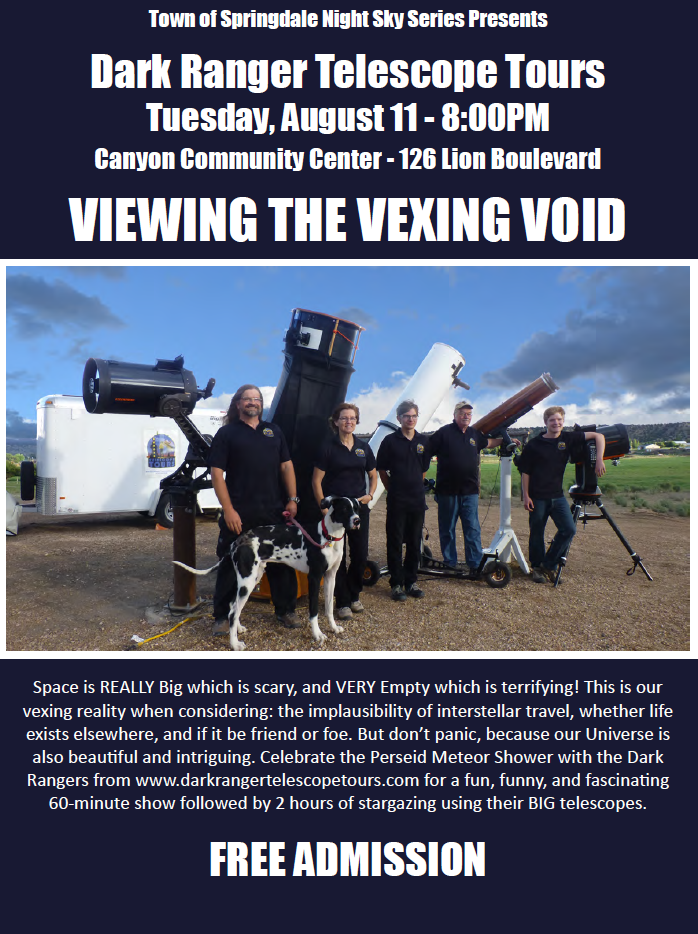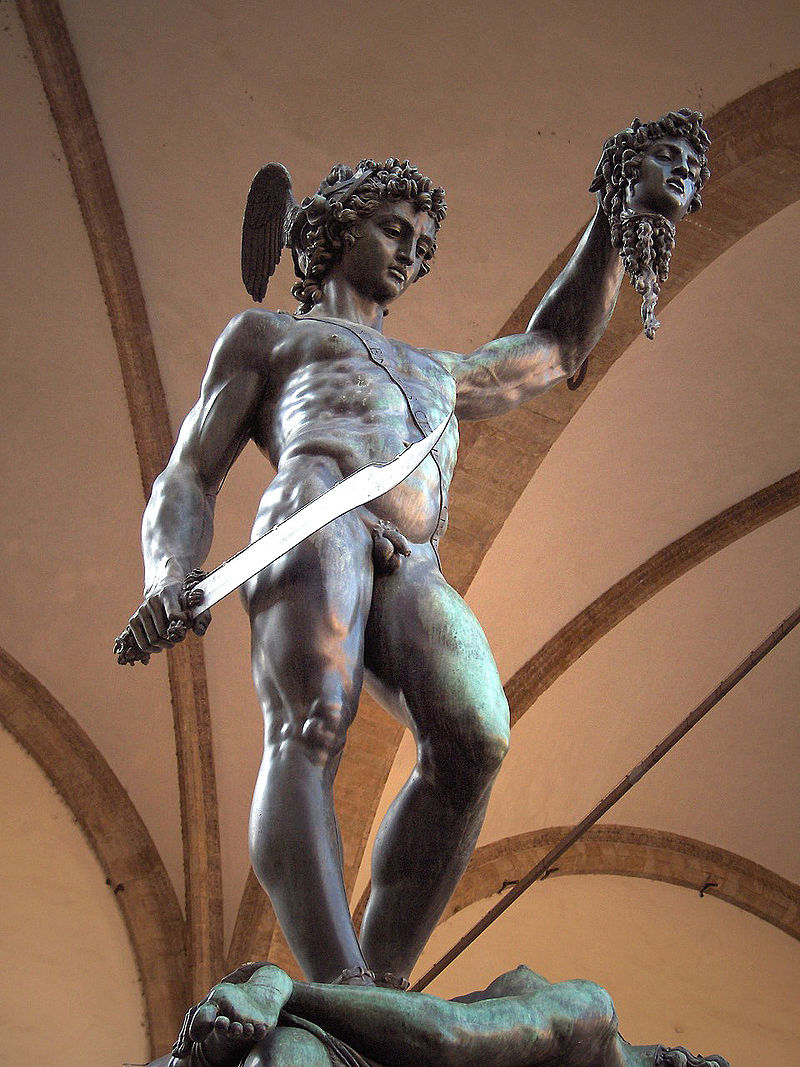
ST. GEORGE — NASA and others hail the Perseids the best meteor shower of the year. Although the meteors have been actively visible since July 13 and will remain so through Aug. 26, the Perseid meteor shower peaks Tuesday and Wednesday this week. The show will climax at midnight MDT Wednesday when up to 100 meteors per hour may be visible in the dark sky after moonset falls at 7:11 p.m. in Utah and the moon passes beneath the horizon.
“A good number of meteors should be visible near Perseus every night from late July through August 24,” NASA’s Web page states. “However, you’ll see fewer meteors before and after the peak. Look towards the familiar constellations Cassiopeia and Perseus in the northeast. They rise soon after sunset, but you’ll want to wait til they are higher in the sky to see the most meteors.”
Southern Utah night sky events
No telescope or even binoculars are needed to view meteors, but telescopes make for more comfortable viewing and offer the sky gazer a better chance of enjoying the beauty of the meteoric spectacle.

In Southern Utah, there are at least three public night sky viewing events open to the public at no cost and equipped with telescopes:
- Ivins – The St. George Astronomy Group is hosting a Perseids meteor shower party at Unity Park, 200 W. 400 South (midway between 200 West and 400 West) in Ivins, Wednesday from 9-11 p.m., just shy of the shower’s peak
- Springdale – The Dark Rangers, internationally acclaimed astronomers and night sky advocates, are coming to the Canyon Community Center, 126 Lion Blvd in Springdale, Tuesday, at 8 p.m. to present their telescope tours 60-minute astronomy presentation, followed by two hours of star gazing with some of what the group’s release said are the largest mobile telescopes you have ever seen
- Three Peaks northwest of Cedar City – Southern Utah Space Foundation is hosting its Perseids shower viewing at Three Peaks Recreation area, 9 miles northwest of Cedar City in Iron County, Wednesday, starting at 8 p.m. | Directions to Three Peaks: From Cedar City; from Enoch City.
About the Perseids
The Perseid meteors radiate from the direction of the constellation Perseus in the northeast; this accounts for their name but does not mean they originate with the constellation.
The meteors actually come from comet particles and bits from broken asteroids shed by Comet 109P/Swift-Tuttle (named for two American astronomers who discovered it during the Civil War) as it rounds the sun. Comet Swift-Tuttle last passed Earth in 1992 but its meteors fall at the same time each year.
When Earth passes near the comet’s orbit, it plows through the swarm of dust and debris that the comet shed long ago. The comet dust then falls through Earth’s atmosphere at high velocity: 37 miles per second, or 133,000 mph. Then it burns up due to friction with air molecules.
Perseids are fast and bright, often leaving long wakes or trains of light and color behind them as they streak through Earth’s atmosphere.
Perseids are also known for their fireballs, NASA states. Fireballs are larger explosions of light and color that can persist longer than an average meteor streak. This is because fireballs originate from larger particles of cometary material. Fireballs are also brighter, with magnitudes brighter than -3.
NASA recommends on its Perseids Web page:
If you see one meteor shower this year, make it August’s Perseids or December’s Geminids. The Perseids feature fast and bright meteors that frequently leave trains, and in 2015 there will be no moonlight to upstage the shower.

Namesake Perseus
Tales of Perseus, the Greek mythological hero, son of Zeus and Danae, are many and involved, even Herculaean one could say. His personal epic took flight from the island of Seriphos when he made a bargain to indulge King Polydectes’ demand for a wedding present, promising to bring the king the head of a serpent-haired Gorgon named Medusa.
Armed with gifts from the gods of winged sandals, a curved sword and a helmet that made him invisible, Perseus set out to fulfill his bargain.
He found the Gorgon and cut off her head. Medusa’s was a lethal head and survived disembodiment with a power to turn into stone any who looked into her gaze. Perseus carried on with his epic journey armed with her deadly head toted in a magic bag.
The Medusa was a weapon he would use against many foes, not the least being Leviathan, a sea monster who held the Ethiopian princess Andromeda captive to serve as his next meal. But Perseus turned the gaze of the Medusa on the monster, freezing him into stone and freeing Andromeda – the beauty that would become his wife.
“Perseus bound his wings upon his feet, on each foot bound he them; his sword he girt and sped wing-footed through the liquid air,” the classic poet Ovid wrote in Metamorphoses of Perseus’ quest for Andromeda’s hand in marriage.
In the end, to the demise of the king, Perseus kept his promise returning to Seriphos with the Gorgon’s head. But he had learned of the king’s deceit in the inception of their bargain, a deception in which the king had scorned Perseus’ mother. And so, in an act of vengeance, Perseus turned the eyes of the head with the serpent-strands upon Polydectes forever immobilizing him and those in his company who had derided Perseus and scoffed at the power of the Medusa. Ovid wrote in Metamorphoses:
Perseus rejoined: `By this we give our true pledge of the truth, avert your eyes!’ And by Medusa’s face he made the features of that impious king a bloodless stone.
Perseus and Andromeda lived long and were, tradition has it, immortalized as stars in the sky when they died. As Fabulae described Perseus and others, in his Pseudo-Hyginus:
Mortals who were made immortal … put among the stars.
Resources
Related posts
- Look to the skies; Perseid meteors shower down – 2014
- ‘George, Streetfest’ delivers again; cool entertainment, choice staches
- Standing water on I-15 causes car to spin out, crash
Email: [email protected]
Twitter: @JoyceKuzmanic
Copyright St. George News, SaintGeorgeUtah.com LLC, 2015, all rights reserved.
Awesome! I love the notice for these beautiful celestial events and adding the mythology was a nice touch.